Picture this: a place where the ocean and land constantly wrestle for control. Here, creatures must adapt to a world that shifts from submerged sanctuary to sunbaked shoreline twice a day. This is the intertidal zone, a vibrant and ever-changing ecosystem nestled between the water’s edge and the tide’s reach. Join us as we explore this incredible world where life dances to the rhythm of the waves.
Intertidal Zone Definition
Imagine standing on the beach, right where the ocean waves crash upon the shore. That area, sometimes submerged and sometimes exposed as the tide ebbs and flows, is the intertidal zone. It’s also referred to as the littoral zone, a term that speaks to its connection with the shore.
This zone is a fascinating world in its own right, constantly changing with the rhythm of the tides. Twice a day, the tide rolls in, blanketing everything in salty seawater. And twice a day, it retreats, leaving creatures and plants exposed to the sun and air.
This constant cycle creates a unique set of challenges. Organisms that call this place home must be incredibly resilient, able to cope with drastic swings in temperature, salinity – the saltiness of the water – and even oxygen availability. Yet, despite these challenges, the intertidal zone thrives with life, demonstrating nature’s incredible ability to adapt.
Over time, intertidal organisms have evolved remarkable adaptations to handle these fluctuating conditions. Barnacles and mussels, for example, have developed strong shells that clamp tightly to rocks, safeguarding them from being swept away by powerful waves or drying out when the tide recedes. Others, like crabs and snails, burrow into the sand, seeking refuge from the sun’s intense heat and hungry predators.
The intertidal zone is not just about individual survival; it’s a bustling community. From microscopic algae clinging to rocks to scurrying crabs, colorful starfish, and fish darting in and out with the tide, it’s a dynamic ecosystem where each species plays a crucial role.
This vibrant community isn’t just a spectacle of nature’s resilience; it’s vital to the planet’s health. The intertidal zone acts as a critical link between the land and the open ocean, functioning like a giant filter that helps purify water and recycle nutrients. It also helps protect our coastlines from erosion, acting as a natural buffer against waves and storms.
So, the next time you’re at the beach, take a moment to appreciate the incredible intertidal zone. It’s a powerful testament to nature’s adaptability, resilience, and the interconnectedness of all living things.
What is the intertidal zone simple definition?
The intertidal zone is that stretch of coastline engaged in a perpetual dance with the ocean. It’s the area submerged during high tide and revealed during low tide, creating a unique environment that shifts between a watery world and a sun-drenched shoreline.
This constant push and pull of the tides make the intertidal zone a challenging place to live, yet it teems with biodiversity. Only the toughest and most adaptable creatures can handle the extreme changes in temperature, salinity, and wave action that come with the tides.
Imagine barnacles clinging tenaciously to rocky surfaces as waves crash around them or crabs scurrying about in search of a meal before the tide returns. These creatures have evolved remarkable adaptations to not only survive but thrive in this ever-changing environment. Some burrow into the sand to escape the sun’s harsh rays, while others have developed tough outer shells to withstand the pounding waves.
The intertidal zone isn’t just a display of nature’s creativity; it’s vitally important for the health of our oceans and our planet. It acts as a natural filter, cleaning the water by trapping pollutants and sediments. It also provides a nursery ground for many fish and invertebrate species, ensuring a healthy future for our marine ecosystems.
Scientists continue to unravel the mysteries of this incredible habitat, exploring the intricate relationships between the organisms that live there and how they’ll adapt to a changing climate. The intertidal zone remains a vital part of our planet’s natural heritage and a constant source of wonder and discovery.
What is the Intertidal Zone for Kids?
Imagine the beach as a giant bathtub that the ocean fills up and drains out every single day! The area between the highest point the tide reaches and the lowest point the water goes is the intertidal zone, and it’s much more than just wet sand.
Think of it like a city with different neighborhoods. Some creatures prefer to live on the rocky cliffs of this city, equipped with special grips that allow them to hold on tight as waves crash around them. Others prefer the sandy suburbs, where they can dig down and relax when things get too rough.
The residents of the intertidal zone are masters of disguise and survival. Imagine having to go from being completely underwater to high and dry in just a few hours! Some creatures have developed tough shells for protection, others have special tubes for breathing air, and some can even change colors to blend in – now that’s being prepared!
Scientists are always learning new things about these amazing creatures and how they manage to thrive in such a constantly changing environment. Some even think the intertidal zone could hold clues to how life on Earth first emerged from the water! So, next time you’re at the beach, remember there’s a whole hidden world waiting to be explored at the edge of the sea!
Why is an intertidal zone important?
Imagine you’re strolling along the beach, and the tide is low, revealing pools of water teeming with life. This is the intertidal zone – a fascinating “no man’s land” where the ocean and land intersect. While it might seem like a harsh environment with crashing waves, intense sun, and constantly fluctuating tides, the intertidal zone is surprisingly important.
For starters, it serves as a bountiful buffet for many marine animals. Crabs, snails, starfish, and even some fish rely on this zone for their meals, grabbing a quick bite before the tide rushes back in.
The changing tides are essential for creating this unique habitat. As the tide recedes, it leaves behind small pools of water that become their own miniature ecosystems. The water temperature changes, the saltiness fluctuates, and all sorts of fascinating interactions unfold.
The intertidal zone isn’t just crucial for full-time residents; it’s also a vital stopover point for migratory birds. They rely on the intertidal zone for a quick snack and a little rest before continuing their long journeys.
But the intertidal zone’s importance extends far beyond providing sustenance. It plays a vital role in maintaining the health of the entire ocean. Think of it as the ocean’s filter. This zone helps to filter out pollutants and excess nutrients from the water, preventing them from reaching deeper areas where they could cause harm.
Furthermore, the intertidal zone acts like a giant sponge, protecting the coastline from erosion. The crashing waves may look impressive, but over time, they can cause serious damage. The intertidal zone acts as a buffer, absorbing some of that energy and preventing the land from being slowly worn away.
Scientists also study the intertidal zone to better understand climate change. The creatures that live here are incredibly tough and adaptable, but they are being put to the test now more than ever. Rising sea levels, ocean acidification, and changes in water temperature are all impacting the intertidal zone in ways we are still trying to fully comprehend.
The next time you find yourself at the beach, take a moment to appreciate the intertidal zone. It is a fascinating and crucial ecosystem that plays a vital role in the health of our planet.
What is an example of an intertidal zone ecosystem?
Imagine a beach transformed into a giant buffet for a diverse array of creatures, all thanks to the ocean’s rhythmic tides. This is the intertidal zone – a dynamic world where life has adapted to thrive between the land and the sea.
High up on the beach, in the high intertidal zone, only the hardiest creatures reside. This “splash zone” is submerged only during the highest tides. Here, you’ll find resilient organisms like rockweed, a type of seaweed that clings tenaciously to the rocks. Acorn barnacles, resembling miniature volcanoes, also make their home here, patiently waiting for the tide to bring them food. Turban snails, with their beautifully spiraled shells, and speedy little lined shore crabs also inhabit this zone, constantly searching for a meal.
Moving down the beach, as the tide begins to come in more frequently, we reach the mid-intertidal zone. Here, the competition for space and resources intensifies. Mussels, those tasty bivalves we often enjoy, are masters of this zone. They cling to rocks with remarkable strength, their shells protecting them from the relentless pounding of the waves. Limpets, looking like colorful little hats scattered on the rocks, are busy scraping algae off the surfaces with their rough tongues. Sea stars, those fascinating creatures with arms radiating from a central disc, are the predators of this realm, slowly but surely hunting down their prey.
Finally, we reach the low intertidal zone, a hidden world revealed only during the lowest tides. Sea urchins, covered in protective spines, act as tiny lawnmowers, grazing on algae and playing an important role in maintaining the ecosystem’s balance. Crabs of all shapes and sizes scuttle sideways, their claws snapping as they compete for food. If you’re lucky, you might even spot fish darting through the kelp forests, their scales shimmering in the sunlight.
Scientists continue to unlock the secrets of the intertidal zone. For instance, there’s ongoing research into how climate change might impact these fragile ecosystems. Will rising sea levels push species further up the shore? How will changes in water temperature affect the animals and plants that call this zone home? These are just some of the questions researchers are striving to answer.
The next time you visit the beach, take a moment to appreciate the intricate world of the intertidal zone. It’s a powerful reminder that life finds a way to thrive even in the harshest environments, and there’s always more to discover about the natural world around us.
Why is the intertidal zone so harsh?
The intertidal zone, where the ocean throws a beach party twice a day, is a challenging place to live. It’s a constant tug-of-war between land and sea, and the creatures that call it home have to be tough to survive.
Imagine going for a refreshing swim in the ocean, then suddenly finding yourself sunbathing on the beach, only to be plunged back into the water again – all within a few hours! That’s the reality for animals living in the intertidal zone.
One of the biggest challenges is the constantly changing temperature. When the tide recedes, the intertidal zone can transform into a frying pan under the blazing sun. Then, just as quickly, the tide rushes back in, bringing with it a wave of cold water. Creatures that live here must be able to cope with these extreme temperature swings, and they’ve developed some pretty impressive adaptations to do so.
Another challenge is the constant threat of dehydration. When the tide goes out, the intertidal zone can dry up incredibly fast. Many creatures have developed ingenious ways to cope with this, such as growing tough outer shells that act like personal water bottles or burrowing into the sand to seek out moisture.
And if that weren’t enough, the saltiness of the water is also constantly changing. Heavy rain can make the intertidal zone practically freshwater, while intense sunshine can make it even saltier than the ocean itself. The creatures that live here have to be able to handle these dramatic shifts in salinity, and they’ve evolved special mechanisms to do so.
Then there are the waves. Crashing down with tremendous force, they pose a constant threat to intertidal life. Some creatures have developed super-strong attachments, like suction cups that would put any industrial adhesive to shame. Others have learned to burrow deep down into the sand, where the waves can’t reach them.
Despite all these difficulties, the intertidal zone is bursting with life. It’s a testament to the power of adaptation – a place where creatures big and small have found ways to thrive despite the odds.
What does intertidal mean for kids?
The intertidal zone is that exciting place at the beach where the ocean and the land like to play tag! When the tide is high, the ocean rushes in, covering everything and creating a watery playground for all the sea creatures. But then, as the tide goes out, it’s like the ocean pulls back a giant curtain, revealing a whole new world!
This “revealed” world is the intertidal zone. It can be rocky, sandy, or even muddy, and it’s absolutely teeming with life. Imagine colorful starfish clinging to rocks, speedy crabs scurrying around, and maybe even a shy sea anemone waving hello.
But life in the intertidal zone isn’t always easy. These tough little creatures have to deal with some pretty extreme makeovers! One minute they’re relaxing underwater, the next they’re basking in the sun. They have to be able to handle big changes in temperature, unexpected bursts of salty water, and even moments when there’s not a lot of oxygen to go around.
So how do they do it? Over time, these amazing animals have learned some pretty neat tricks. Some, like barnacles, are basically glued to the rocks, so they don’t get swept away by strong waves. Others, like mussels, have these super-strong threads that act like anchors, holding them in place. And then you have the super adaptable ones, like crabs, who can actually breathe both underwater and on land!
The intertidal zone isn’t just about survival; it’s also a really important part of the bigger ocean ecosystem. Think of it like a giant buffet for all sorts of hungry visitors. Seabirds stop by for a snack, fish come looking for a tasty treat, and even land animals might wander down for a quick bite.
Scientists are still figuring out all the secrets of the intertidal zone. It’s like a giant puzzle they’re constantly working on! They’re learning more and more about the incredible creatures that live there, how they’ve adapted to such a challenging environment, and how important this zone is to the health of our oceans.
Next time you’re at the beach, seek out that magical spot where the ocean meets the land and catch a glimpse of the incredible intertidal zone in action!
What is intertidal zone grade 5?
We all know that the beach is where the land meets the ocean. But did you know that some parts of the beach are underwater at certain times and above water at others? Have you ever built a sandcastle only to have the water come up and wash it away? That area, the one that’s always changing with the tides, is called the intertidal zone. It’s like a secret world that is revealed when the tide goes out!
Scientists sometimes call this the “littoral zone,” which simply means “related to the shore.” And it’s not just sand down there. The intertidal zone is teeming with life! It’s home to all sorts of fascinating creatures – such as starfish clinging to rocks, crabs scuttling in the sand, and maybe even little fish hiding in tide pools.
The plants and animals that live in the intertidal zone have to be tough. Imagine being underwater one minute and then high and dry the next. Or experiencing the warm sun one minute and then being splashed by cool ocean water the next! The creatures that live here have developed amazing superpowers to survive these challenging conditions.
Let’s imagine the intertidal zone like a three-story building:
- The Top Floor (High Intertidal Zone): This area is like a penthouse suite that only gets wet when the tide is extremely high. Only the toughest creatures live here because they have to be able to handle being out of the water for a long time and being exposed to the hot sun.
- The Middle Floor (Mid Intertidal Zone): This is more like a regular apartment, getting wet and then dry twice a day with each tide change. It’s a bit easier living here, so you’ll find a wider variety of plants and animals.
- The Ground Floor (Low Intertidal Zone): This area is like a basement apartment that’s underwater most of the time, only seeing the sunlight for a short time during low tide. The creatures that live here love being submerged in the ocean.
Why should we care about this constantly changing zone? Because it’s incredibly important for the overall health of the entire ocean! It’s like a giant buffet for lots of different creatures. Birds stop by for a snack, fish come to lay their eggs, and even bigger animals like seals might pop in looking for a tasty meal.
Unfortunately, things like pollution and climate change are making it harder for creatures to survive in the intertidal zone. But we can all help protect this amazing habitat by reducing our use of plastic and keeping our beaches clean.
Scientists are still learning so much about the intertidal zone. It’s like a giant puzzle they’re still trying to solve! Who knows what other cool creatures and secrets we’ll uncover as we continue to explore this incredible place where the land meets the sea?
What are 5 facts about the intertidal zone?
The intertidal zone, where the ocean meets the land, is an ecosystem full of wonder and fascinating facts. Let’s delve into five intriguing tidbits about this unique environment.
- A Balancing Act of Survival: Imagine a place where the rules of land and sea constantly collide. Intertidal creatures aren’t just dealing with the sun and surf; they’re engaged in a high-stakes game of adaptation. When the tide recedes, they face a desert-like environment with scorching sun and drying winds. When the tide returns, they must contend with crashing waves and fierce predators.
- From Rocky Retreats to Shifting Sands: The intertidal zone isn’t just one big, uniform beach. Picture craggy rocks offering a firm grip for clinging critters, soft sands providing a quick escape for burrowing animals, and muddy flats teeming with hidden treasures. Each micro-habitat within the intertidal zone hosts its own unique community, all perfectly adapted to their ever-changing neighborhood.
- Masters of Disguise and Endurance: Life in the intertidal zone is all about resourcefulness. Barnacles and mussels cement themselves to rocks, creating their own fortresses against the relentless waves. Crabs and snails retreat into their shells, becoming masters of hide-and-seek. Anemones transform into seemingly lifeless blobs during low tide, only to bloom again with the return of the water. These creatures are champions of survival!
- More Than Meets the Eye: While the intertidal zone might appear to be a quiet stretch of sand or rocks at low tide, a hidden world thrives beneath the surface. It’s a vital feeding ground for shorebirds, who use their specialized beaks to extract tasty morsels from the sand. And as the tide comes in, fish and other marine animals arrive to feast on the rich buffet of intertidal life.
- A Delicate Dance Under Threat: While incredibly resilient, the intertidal zone is facing serious challenges. Pollution, habitat destruction, and climate change are all taking their toll. Rising sea levels threaten to shrink their precious habitat, and warmer waters could disrupt the delicate balance of life. Scientists are working tirelessly to understand these threats and find ways to protect this amazing world between the tides.
What is the intertidal zone quizlet?
Picture the beach for a moment. The water comes up and covers the sand, then retreats, leaving it exposed. That area between the high tide line and the low tide line is the intertidal zone. It’s a watery battleground where the ocean and the land are locked in a perpetual tug-of-war, and the plants and animals that live there must be incredibly resilient to survive!
Creatures in the intertidal zone go from relaxing underwater to baking in the sun in a matter of hours. They have to endure crashing waves, fluctuating salt levels, and the constant threat of drying out.
Despite these challenges, the intertidal zone is teeming with life. From barnacles and crabs to seaweed and fish, these creatures have not only survived but thrived. They’ve adapted ingenious ways to cope with this ever-changing environment, such as burrowing in the sand to avoid dehydration or developing strong grips to hold onto rocks when the waves crash in.
The intertidal zone is also a vital feeding ground for a wide range of animals. Birds feast on exposed shellfish, while fish arrive with the tide to devour smaller creatures. It’s a crucial part of the coastal ecosystem.
However, this zone is incredibly sensitive. Pollution, alterations to the shoreline, and climate change can significantly disrupt the delicate balance of life in the intertidal zone.
Scientists are still unlocking the mysteries of this amazing habitat. They continue to make new discoveries about the remarkable adaptations of the creatures that live there and the intricate ways they interact. The intertidal zone serves as a reminder that the ocean is full of surprises and that we still have much to learn about this vast underwater world.
Why is it difficult to live in an intertidal zone?
The intertidal zone, that coastal strip submerged at high tide and exposed to the air at low tide, presents a uniquely challenging environment for the creatures that call it home.
First and foremost, intertidal organisms must endure dramatic temperature swings. Imagine being plunged into cold water, then left to bake under the scorching sun – all within a few hours. These temperature fluctuations are incredibly stressful for animals accustomed to more stable conditions.
Secondly, drying out is a constant threat. When the tide recedes, it’s a race against the sun. Barnacles and mussels have evolved tough shells that seal tightly to conserve moisture, while crabs and snails retreat into cool, damp crevices or burrow beneath the sand.
As if the fluctuating temperatures and risk of dehydration weren’t enough, imagine a constant battle for resources in a neighborhood teeming with predators. Food and space are limited in the intertidal zone, so competition is fierce. Animals have evolved a variety of strategies to secure their meals, from filtering plankton from the water to preying on their neighbors.
The intertidal zone also becomes a feeding ground for land-based predators when the tide is out. Birds, raccoons, and other animals take advantage of this temporary smorgasbord, making camouflage, spines, and even toxic defenses essential for survival.
Scientists believe that the ongoing challenges of the intertidal zone have driven some of the most remarkable adaptations in the animal kingdom. From the intricate shells of mollusks to the camouflage of octopuses, these creatures showcase nature’s incredible ability to overcome adversity.
While we have a good understanding of the basic challenges and adaptations found in the intertidal zone, research continues to reveal new and fascinating details about this dynamic ecosystem. Scientists are currently studying how climate change might impact these already stressed environments and exploring the complex relationships between different intertidal species. The intertidal zone stands as a testament to the power of life to adapt and thrive, even in the face of seemingly insurmountable challenges.
Explore further:
- Discover the fascinating supralittoral zone where organisms have adapted to survive extreme conditions.
- Uncover dynamic intertidal zone facts that reveal the constant battle between land and sea.
- Dive into the world of littoral zone organisms to learn about their unique adaptations and the rich biodiversity found within this intertidal realm.
- Learn more about the fascinating animals in the littoral zone, from mighty marine mammals to microscopic invertebrates that inhabit this diverse ecosystem.
- Amazing March Fun Facts: Unveiling History & Celebrations - April 15, 2025
- Master how to write height: A complete guide - April 15, 2025
- How High Are Your Standards Test: Find Your Perfect Match Now - April 15, 2025
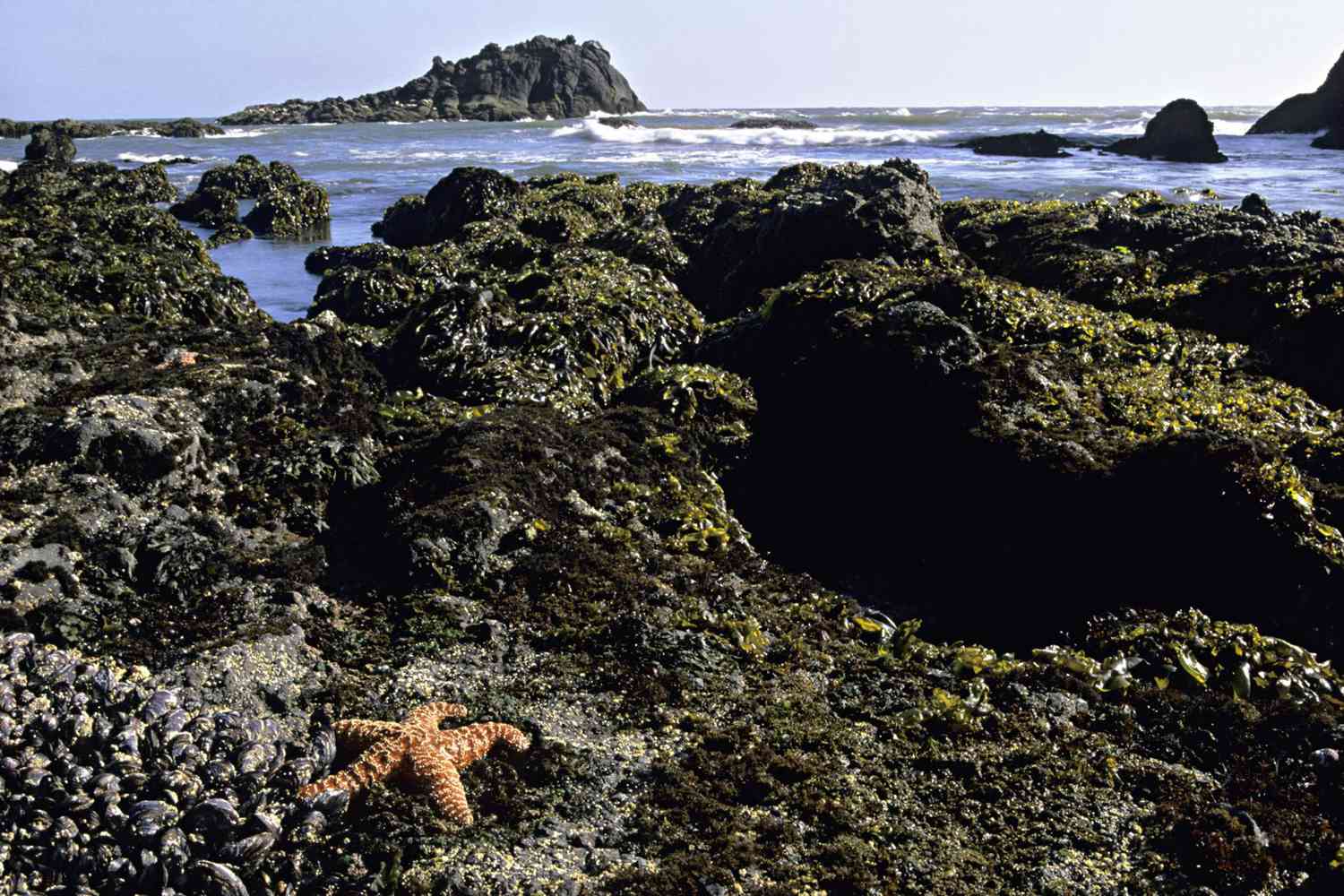
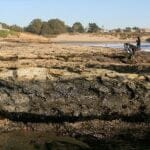

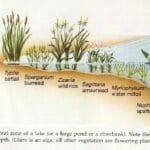
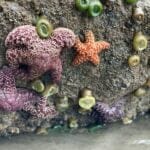
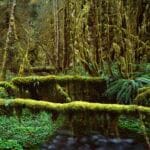











1 thought on “Unmasking the Intertidal Zone: Where the Ocean Meets the Land”
Comments are closed.